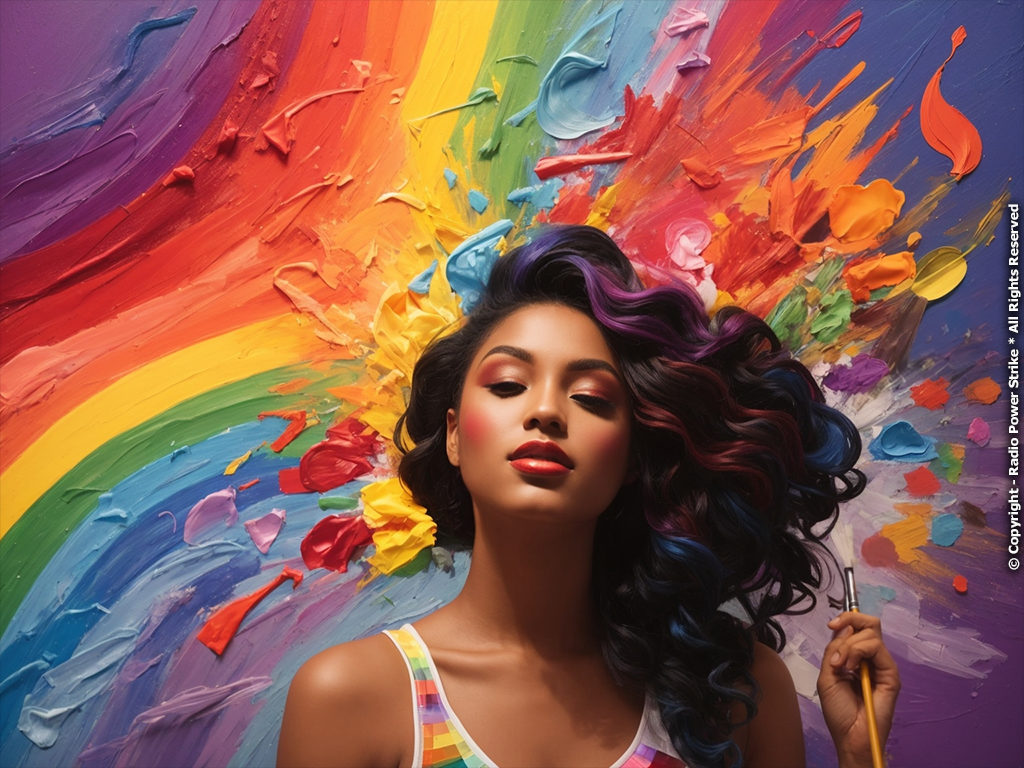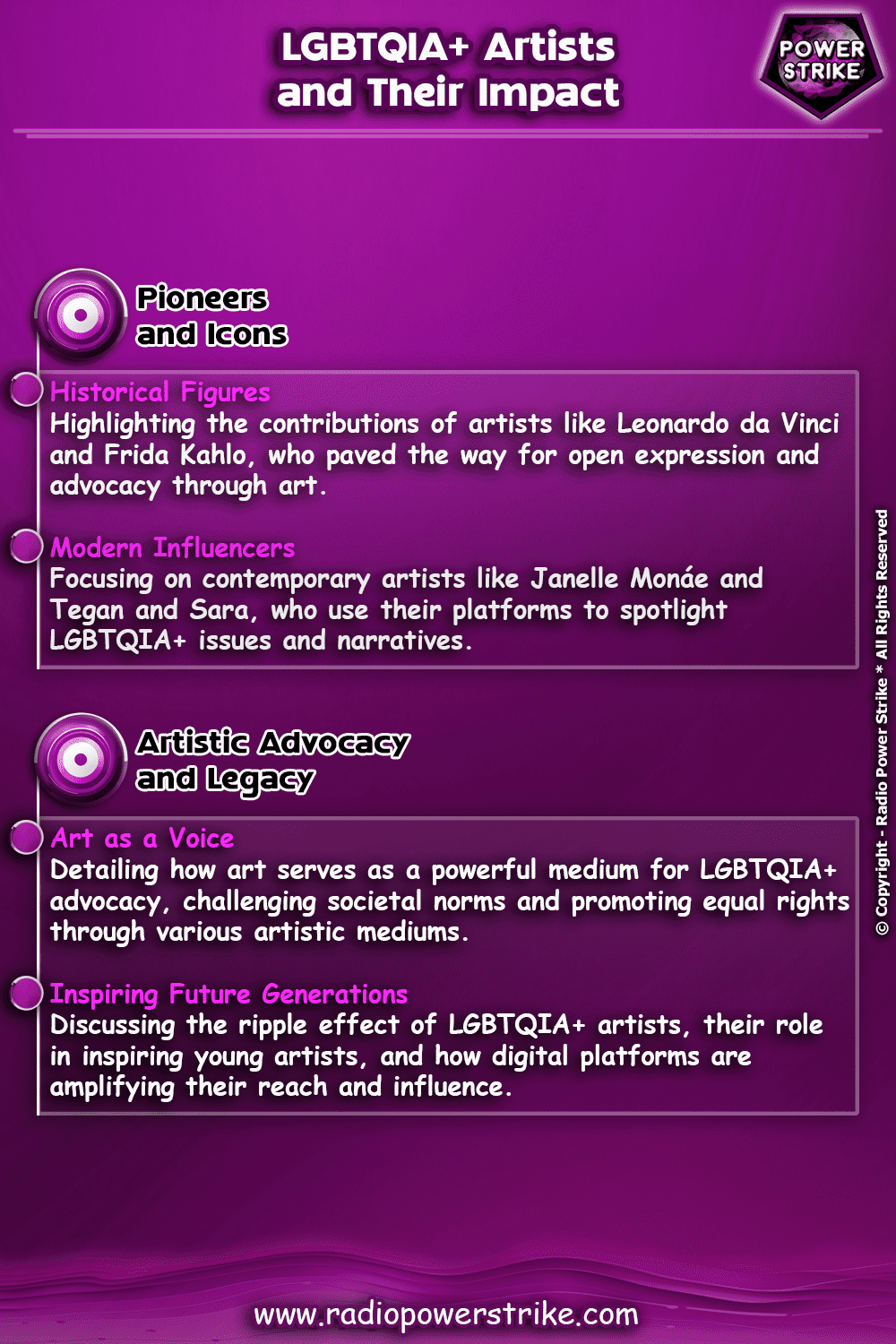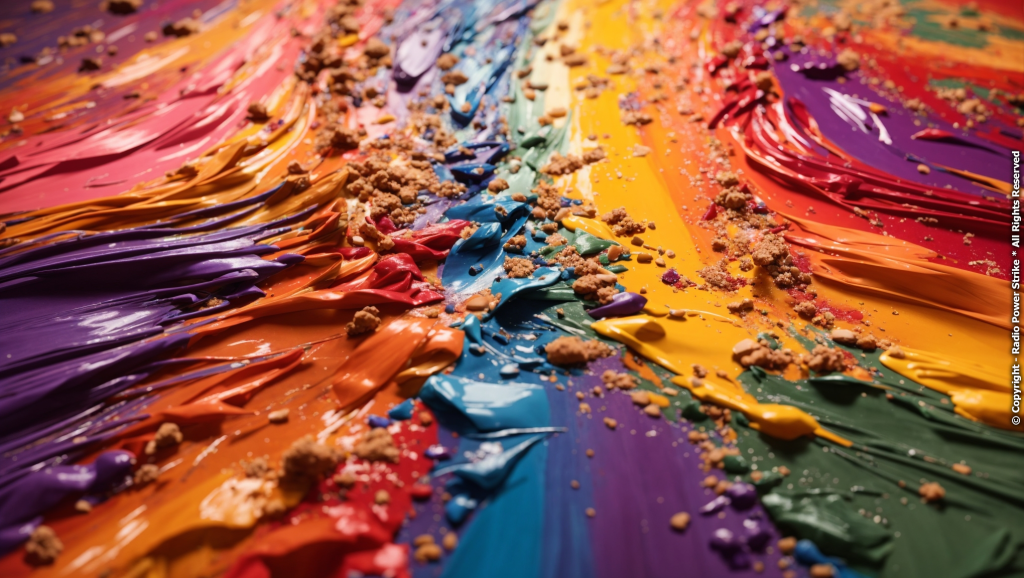Empowerment Through Art: LGBTQIA+ Artists and Their Impact
Celebrating Queer Voices and Their Transformative Influence in the Art World

Art has always been a powerful medium for self-expression, advocacy, and societal reflection. For the LGBTQIA+ community, art offers a unique platform to voice their experiences, challenges, and triumphs. Through various artistic mediums, queer artists have not only showcased their talent but have also played a pivotal role in shaping societal perceptions and advocating for LGBTQIA+ rights.
Historical Context and Pioneering Figures
Historically, many LGBTQIA+ artists had to hide their identities due to societal prejudices. However, their art often contained subtle hints or overt themes reflecting their experiences. Figures like Keith Haring, whose pop art in the 1980s addressed societal issues like AIDS, and Frida Kahlo, whose self-portraits touched on gender, identity, and post-colonialism, paved the way for future queer artists.
The Renaissance period, too, had its share of artists like Leonardo da Vinci and Michelangelo, who, while not openly LGBTQIA+, showcased themes in their work that resonated with queer narratives. Their contributions laid the groundwork for future generations to openly express and advocate through art.
Today, artists like Janelle Monáe and Tegan and Sara use their platforms to highlight LGBTQIA+ issues, showcasing the evolution and resilience of queer representation in art.
Art as a Tool for Advocacy and Representation
Art transcends boundaries, making it an ideal platform for advocacy. LGBTQIA+ artists have consistently used their work to challenge societal norms, question gender binaries, and advocate for equal rights. For instance, the photography of Robert Mapplethorpe in the late 20th century challenged conventional notions of beauty, masculinity, and eroticism.
Performance art, too, has been a significant avenue for queer expression. Artists like Marina Abramović and David Wojnarowicz have used their bodies as canvases to explore themes of love, identity, and societal constraints.
Moreover, events like the Queer Art Film Festival and exhibitions dedicated to LGBTQIA+ themes have become platforms to celebrate and understand the diverse experiences within the community, further solidifying art’s role in advocacy and representation.

The Ripple Effect: Inspiring Future Generations
The impact of LGBTQIA+ artists extends beyond their art. By breaking barriers and challenging the status quo, they inspire future generations to pursue their passions without fear of prejudice. Young queer artists now have role models to look up to, like Laverne Cox, who uses her platform to discuss trans rights and representation.
Furthermore, educational institutions are increasingly incorporating LGBTQIA+ art into their curriculums, ensuring that the next generation is exposed to diverse narratives. This inclusion fosters understanding, acceptance, and appreciation for the rich tapestry of queer experiences.
The digital age has further amplified the reach of LGBTQIA+ artists. Platforms like Instagram and TikTok allow artists to showcase their work, connect with a global audience, and build communities, ensuring that the legacy of queer art continues to thrive and inspire.
The world of art is richer and more diverse thanks to the contributions of LGBTQIA+ artists. Their work, which spans centuries and various mediums, has not only added depth and dimension to the art landscape but has also played a crucial role in societal change. As we celebrate their achievements, we’re reminded of the transformative power of art and its ability to inspire, advocate, and empower.

Glossary
Queer Art
Art that is created by individuals identifying as LGBTQIA+ and often explores themes related to their experiences, identities, and societal issues.
Performance Art
A type of art that involves live performances by the artist, often used to explore complex themes such as identity, gender, and societal norms.
Queer Narratives
Stories and artistic expressions that revolve around the experiences and perspectives of LGBTQIA+ individuals.
Digital Age in Art
The modern era where artists use digital platforms like Instagram and TikTok to showcase their work and connect with a global audience.
Art Advocacy
The use of art as a tool to advocate for societal change, including the promotion of LGBTQIA+ rights and representation.
Frequently Asked Questions
Who are some pioneering LGBTQIA+ artists in history?
Historically, artists like Leonardo da Vinci, Michelangelo, Frida Kahlo, and Keith Haring have been noted for their contributions to queer art, either through their personal identities or the themes explored in their works.
How has art served as a tool for advocacy in the LGBTQIA+ community?
Art has served as a powerful medium for advocacy by challenging societal norms, questioning gender binaries, and promoting equal rights. It has also been a platform for representation, giving a voice to the diverse experiences within the LGBTQIA+ community.
How are modern LGBTQIA+ artists influencing the art world?
Modern LGBTQIA+ artists are using their platforms to highlight issues pertaining to the community, showcasing resilience and evolution in queer representation. They also utilize digital platforms to reach a global audience and inspire future generations.
What role do events like the Queer Art Film Festival play in promoting LGBTQIA+ art?
Events like the Queer Art Film Festival serve as platforms to celebrate and understand the diverse experiences within the LGBTQIA+ community, fostering appreciation and dialogue around queer art and narratives.
How is the digital age impacting the reach and influence of LGBTQIA+ artists?
The digital age has amplified the reach of LGBTQIA+ artists by allowing them to showcase their work to a global audience, build communities, and connect with like-minded individuals, ensuring the legacy of queer art continues to thrive.
How are educational institutions incorporating LGBTQIA+ art into their curriculums?
Educational institutions are increasingly including LGBTQIA+ art in their curriculums to expose students to diverse narratives, fostering understanding, acceptance, and appreciation for the rich tapestry of queer experiences.
How does the work of LGBTQIA+ artists contribute to societal change?
The work of LGBTQIA+ artists contributes to societal change by breaking barriers, challenging the status quo, and inspiring future generations to pursue their passions without fear of prejudice. Their contributions have added depth and dimension to the art landscape, playing a crucial role in societal evolution.

Comments are closed, but trackbacks and pingbacks are open.